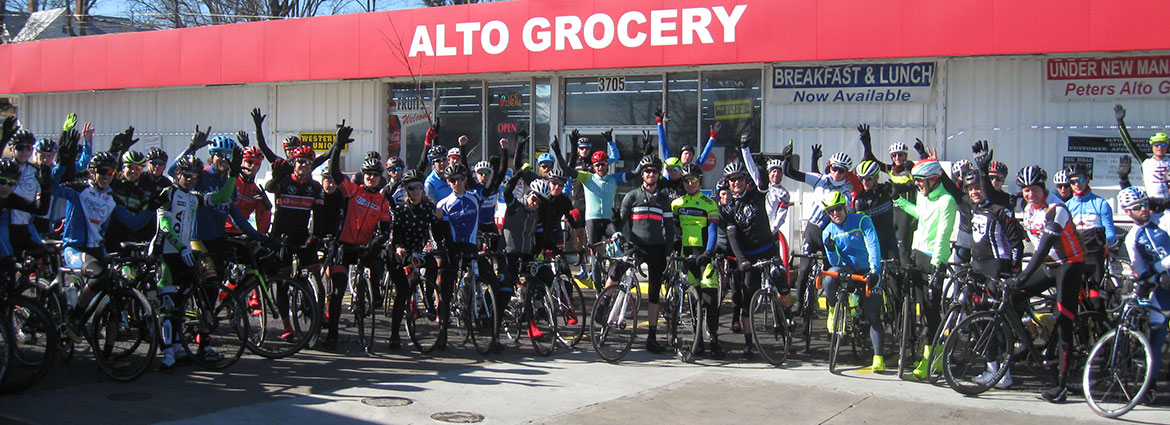The Cranberry Diaries: Chapter 2
THE CRANBERRY DIARIES
CHAPTER 2: THE EMPIRE IN MY MIND
After one year of connubial bliss without the utterance a single acrimonious syllable between them (excluding, of course, the one minor misunderstanding at the airport in Bosnia wherein Jeffrey left Erin stranded in another country without so much as a wink and a nod, which thereafter caused his wife to launch into such a raging conflagration of abrasive objurgation that her precise words cannot be printed on these pages), the two heroes of our last story, Jeffrey Shirey-Winter and Erin Winter-Shirey, decided it was time to make a return trip to the land formerly inhabited by the Incas, and thereafter conquered by the Spanish, and now populated with a multifarious blending of each: In June of 2006, our 2 adventurers returned to Peru. Naturally, your most Humble Chronicler tagged along for the ride…like a blood sucking leech.
Though Peru is now populated by an admixture of bloodlines, if an adventurer’s explorations takes him or her a fair ways back into the oxygen starved regions of the Northern Andes, back into the rugged mountains where there is still no electricity and no indoor plumbing, a visitor can still brush up against the ancient culture of the Inca through modern day campesinos. And this is exactly what we three time travelers decided to do—we returned to Juaraz, Peru (pop. 140,000), a city nestled in a high valley and encircled by snowcapped mountains whose jagged spires pierce the underbelly of the clouds that coalesce around them. Many mountains in the Northern Andes soar to over 20,000 feet. The city of Juaraz itself sits at 10,700 feet, still a healthy ways up the beanstalk. This year, we had the added advantage of spending two weeks in Peru instead of one: ergo, we could climb closer to Heaven.
Instead of 1 big loop, we opted for several different treks, returning to Juaraz in between each outing. The Skipper decided the biggest mountain we would tackle would be the revered Mount Pisco, which at 19,200 feet would be the highest any in our conjugal triangle had ever reached, by a long shot. Skipper said Pisco was a “trekking peak, other than that one little 10 meter wall we’ll climb.” As the day to depart approached and Pisco loomed closer on the horizon, I prayed I had not morphed into a fat cat lawyer. My reputation depended on it.
Day 1: Fortuna
The travel times for last year’s trip had been so agreeable to our protagonists’ temperament, that we traveled both to and from Peru at the same times of day this year: The trip from Atlanta to Lima was from 4 p.m. to 11 p.m., and the return trip was a red-eye that departed at 12 midnight and arrived back home at 7 in the morning. On the return trip, with the correct combination of newly purchased sleeping supplements, one can clock out for the entirety of the trip. On the trip down to Peru sleep was not an option. Expectation and excitement were the name of the game.
On June 22, 2006 we three seekers of cultural curiosities departed Atlanta as scheduled bound for Lima, Peru. On the tarmac in Atlanta, however, plans broke down. There was a traffic jam on the runway. “It’ll be just a minute or so,” a suave speaking fabulist announced on the intercom. Jeffery and Erin were seated 20 rows in front of me. They were plotting and planning in conspiratorial fashion, leaning into one another, excluding me from their nuptial osculation. As for myself, I had the good fortune to land in a seat beside an oracle who, after inquiring of my name (I only gave my first—Humble…), proceeded to deliver an unbidden expiation on the evils of a college education, complete with lurid examples of persons waylaid by sin and debauchery while on sabbatical at some of our finer institutions of higher erudition. She was wearing one the 30 or so lime green missionary shirts that were scattered about the guts of the plane. She was clueless about Peru, its people and even the purpose of her trip. I remember thinking at that time, O Fortuna, thou hast done me a dirty turn of the wheel. Quiet was what I craved. I had to settle for second best—alcohol. “Do you always drink so much?” she inquired during the flight. “Yes, it’s a habit I picked up at Harvard,” I replied. 73 light years later we landed in Peru. I found my two compatriots after exiting the plane, placed my head on their shoulders, and silently wept.
We were quickly to our senses and ushered through customs with no problema. We found our private Peruvian taxi that our master guide, the Skipper, arranged for us. Fifteen fast miles later, after racing down a neon highway in Lima, we arrived at our faithful friend Rudy Kayser’s house, the same locale where we sought refuge the previous year. Rudy gave us a huge smile and a big hug. He welcomed us like old friends. He brought us all cervezas after showing us to our immaculate rooms. We downed the welcomed libations, then placed our corpuses in the horizontal position. Tomorrow, our peregrinations into the upper regions of the stratosphere would continue.
Day 2: Home, Sweet Home
The next day our bus did not depart until 1 p.m. so we had a little time to roam around the neighborhood. We woke early and just as last year joined Rudy’s mother in the spacious family dining room for breakfast. The German matriarch was about 80 years old, and appeared to be the adumbrated figure of a once strong and vigorous lady, and now a dignified European elder living in a South American country. Once again, classical music played in the background and I noticed her bookshelves were stocked with books both in Spanish as well as her native tongue—Don Quixote in German, and I didn’t think the Krauts had a sense of humor. This year we inquired about the black and white photograph of her brother hanging on the wall. We learned that he was 18 years old when he was shot down while flying in the Luftwaffe during WW II. His sister, Rudy’s mother and our present companion, lives in Peru where she has been since the 40’s; her first husband, a German citizen, is dead; Rudy’s father, his mother’s second husband, also deceased, was a naturalized Peruvian: There’s a story of international intrigue in this place. I give the Kayser household 5 gold stars, the highest rating, and recommend these most commodious lodgings for any weary soul whose path may someday lead him or her through this spot on the globe.
In Lima, like last year, the hazy winter fog had settled in for the season. The day was smoky gray. We zigged 3 miles down to the coast and zagged our way back through the hustle and bustle of Lima, or at least a small part of it. Lima is a city of 8 million and it is brimming with people streaming up and down the sidewalks. Walking in a straight line for any appreciable distance is impossible. One must shuffle sideways, dance left then right, bounce off others, and dogtrot at times to make progress. Many roads are 5 and 6 lanes across in both directions. I could discern no decipherable driving etiquette or any clear rules of the road. Drivers honk, shove, nudge, veer over, speed up, brake suddenly, and dive their cars into impossible places at precarious speeds. Crossing a roadway for a pedestrian is like running across the racetrack during the Indy 500. (Sometimes an astute Reader may notice I am driven to exaggeration for the sake of hyperbole.)
On the busier roadways police officers are stationed 10 feet above the traffic inside what resembles a blue metal trashcan affixed to the top of a tall, skinny pole. Little horizontal rungs climb the pole to a tiny flap in the floor of the can—the entrance and/or exit to the miniature crow’s nest. The entire edifice is top-heavy and looks as if a strong wind would topple it to the ground. The officers are perched in the middle of 8 lane highways wearing white gloves and with a whistle in their mouths. They wear helmets and tight fitting uniforms. They have a strong resemble to the sweaty, jackbooted police officer in The Village People. Sadly, the Peruvian traffic cops make no impact whatsoever on the wild river of rushing traffic below. Drivers simply ignore the officers—they don’t exist. However, this doesn’t stop the officers from their tragicomic play enacted each day. They blow and they blow and they blow, and they dance and prance in their perch. I surmised, “Sometimes man can get stuck in a rut.” Erin said, “True, that’s why God created woman.”
We became lost on our morning perambulation no less than 17 times, and after returning to the Kayser household and saying our valedictions, we boarded our bus—a big, bad luxury behemoth—and continued on our way to our destination in the sky. We again traveled the Panamericana Highway that straddled the Pacific Ocean. The same shabby shantytowns and the same sunbrowned Peruvians scurried about by the roadside in their daily dance of life. Traveling in the bus we saw the same dusty coastal towns and the same exposed rebar in all the mud brick structures and the same interminable expanses of dirt. Nothing had changed. Time may travel in a circle after all. What fool said that?
On the 14,000 foot monster climb into Juaraz the skies turned black as nighttime overtook the sky. The headlights from our bus swept back and forth across the rocky roadside like searchlights as our bus negotiated the never-ending series of switchbacks to the crest of the climb. This year, unlike last, none of us experienced any ill effects from the dramatic change in altitude. O happy day! By the top, my mind was swimming in a mellifluous matrix of maleficent misdeeds. I looked at Erin and Jeff and smiled.
We arrived safe and sound in Juaraz and were greeted by the Skipper and Mac Wooten, a fellow southerner from Greenville who had also seen the light in Peru. Soon enough we were back at Mama Mesa’s with our bare feet in a chair and our hands gripped tightly around a cold, wet bottle of beer: Hallelujah, home, sweet home.
Day 3: Megrims
Day 3 was nearly my last. We planned on an easy day of walking around Juaraz in an effort to acclimatize our heads, hearts and lungs to our new elevated environs. We first headed to the indoor market in the middle of town. The market is two stories and there are purveyors of every imaginable domesticated flora or fauna in this region, including that scrumptious local dish known as Guinea pig. The market was abuzz in activity. In one section of the market vendors of fresh fish wore gaping grins as they held high their wet, glistening treasures for the gringos in our group to inspect. Shy youngsters smiled as we snapped their photos in front of big plastic buckets of crawling crabs, shiny mollusks and other odd-shaped sea urchins. Dozens of pigs’ feet were hacked off at the knees, tied together, and displayed on tables like bundles of asparagus. Nearby, a corpulent cousin waiting to be de-hocked dangled by its hind two legs while a butcher carved away sections from its flank and dropped the savory slices into a sizzling frying pan. Furious flies darted around the hanging hog like sharks in a feeding frenzy. A diner had the option of enjoying his fried pig sandwich on one of the stools set up at a counter directly in front of a butcher’s little shop of horrors, or wrapping the tasty treat up and enjoying the delightful delectation in privacy at home.
In other sections of the market fruit and vegetables representing all the colors in the rainbow were piled high in wicker baskets: purple peppers, red apples, golden cobs of corn, small brown potatoes, dark green lettuces, and baby yellow bananas. In still other sections clothes, rugs, furniture, electronics, jewelry and cleaning supplies were sold. Most items hung from the roof to avoid contact with the concrete floor. Locals and campesinos from the nearby mountain villages rented stalls in the market and sold their wares. This market was a Super Wal-Mart, Peruvian style.
We saw the campesinos all day, every day, walking on dusty mountain roads carrying their burdens in bundles on their backs and headed into town. Many campesinos—mostly women dressed in bright traditional clothing, many times with a bambino on their backs—would reach town and spread their goods out on the sidewalks. Certain sections of the city were chocked full of these street vendors. The ladies would spread a bright, clean cloth on the ground, and place their wares on top of the cloth. The ladies would take a seat on the ground Indian style, spread their bright wool dress around them like an open parachute, tilt their hats back, and assume a silent position. Some had coca leaves stuck to their foreheads. The little bambino was usually sleeping in a nearby box. On many streets the women were packed together so tightly that walking on the sidewalk was impossible. Instead, we stepped down the center of the street between the two rows of ladies who often stared in dumb amazement at the odd looking cast of characters moving in front of them. The Skipper, who was obviously recognized as the tallest gringo in Juaraz, engaged in a little good natured persiflage with several of the wrinkled old toothless women. The younger indigenous ladies were much more reticent and reserved. They all had deep brown, curious eyes.
After we left the market, we decided to continue trekking around the town. There was a cross planted on a huge hummock overlooking the City and Shirey had the bright idea of hiking up to it, a “megrim” he called it. I eyed him suspiciously. We packed a lunch and were soon underway. Although we didn’t realize it at the time, we were being watched by one of the misfits of the world.
A dirt road wound its way back and forth across the face of the big hill with the cross at the top, sloping upwards at a gentle grade. There were also several “Peruvian paths” that had been cut straight up the side of the hill in case a hiker favored a more direct route to the top. We decided to take one of the Peruvian paths for our trek to the summit.
The hike up took about an hour and we lounged at the top soaking up fuel, drink and the view. The city stretched out beneath us on the valley floor for 5 miles or more. We could see the entire length of the pathway we had just traversed. This was a superb place for a bandito to set up shop—he could watch his prey approach from a long way off. Departing from the summit, Shirey once again had a bright idea: “Hey yall, I’m struck with another megrim. Let’s take the road down!” We did. Like many of life’s more intense and vivid moments, what happened next was not entirely clear until later reflection.
No sooner had we rounded the first switchback than I heard a most unusual and disagreeable noise. The garbled noise sounded like the groaning of a cantankerous animal with its big toe caught in a metal trap. The unpleasant grunts were coming from the top of the bank to my right. I looked up and, shielding my eyes from the sun, deduced the outline of a small, round man standing on the ledge of the 10 meter bank. He was wearing a black cowboy hat and a black bandana over his face and mouth. Only his beady little black eyes were showing. I realized he was slapping madly at his waist, out of which poked the black handle of a chrome plated pistol. The rusty cogs in my slow-witted brain were trying to turn in an effort to help me understand the meaning of this complex conundrum into which we had walked. The gun was a lingua franca I understood.
During my obtuse cerebrations, the Skipper took matters firmly in hand—he had clearly grasped the meaning of the moment. Skipper heard (as he told us later) the stout little gent grumble “Money, money!” in English, but with a thick Peruvian accent. He was agitated. Skip immediately stepped forward and went on the offensive. He put his palms out and in Spanish replied, “We don’t have any money, we have food—why would we have money up here? We have chocolate.” The fact is that both Shirey and I had our entire vacations in our wallets. Skip turned to us and said, “When I say Go, turn and sprint straight down the hill.” The little man on the hill was growing more agitated. He was stamping his feet in anger. He wanted his (our…my) damn money. Suddenly Skip said, “GOOOOOOOOOO!”
Shirey dove down the hill first, again without even a wink or a nod, and was quickly shielded from behind by his wife who followed. Skip grabbed the third slot. Unfortunately, your most Humble Chronicler was left high and dry at the rear of the line. If the pistolero started firing, it was my pumpkin that would take the bullet for the team. There was about a 4 second window period during which time the back of my head was exposed. Running down a dirt and gravel hill while someone is trying to pop a cap in the back of one’s noggin is an exercise fraught with difficulty, trust me. I was slipping and sliding and bouncing off my ass in a most undignified manner. The Skipper had the nerve to yell at me, “Crowe, for Gawd’s sake, stand up!” I wanted to stop and explain the pressure I was feeling, but I had more pressing matters at hand, like saving my life. When I finally reached a position of safety, my heart was fluttering like a bird in a bag. I determined then and there that Death is one sneaky bastard. One must be ready, always. I also determined that I would not blindly follow Shirey during any more of his megrims, whatever the hell those are.
Day 4: Wilkawain
On day 4 of our trip we were joined by another triad of trekkers from Greenville—a dentist, his wife and their traveling mate: Josh, Julian and Lisa. The 6 of us, plus Skipper, Mac and Jorge’s 25 year old son Albert, opted for a day hike to the Wilkawain archaeological complex higher up in the mountains, but only 7 kilometers from Juaraz. The more famous Inca ruins—Cusco, Macchu Picchu and the Inca Trail—are in Southern Peru, but there are significant archeological sites spread across the entirety of the country. The Wilkawain complex predates even the Incas, having been built from 600-900 A.D. The complex consists of a main 3 story building composed of enormous blocks of rock perfectly fitted beside and on top of one another. The craftsmanship of these stone builders is still evident over 1000 years later.
Another part of this ancient village consists of a six foot high stone wall completely enclosing and surrounding other smaller rock structures. Some of the smaller stone structures were used to store food, to provide shelter for animals, and to house humans. There were also two rooms with rocks protruding out of the stone walls in odd places. When I asked our tour guide why the rocks were configured as they were, he asked me to turn around and place my back to the wall. When I had done as directed, he told me to spread my legs and raise my arms over my head. I did. My question was now answered: Hands and feet were bound with twine and wrapped around the protuberant rocks in question. Our guide then put his finger to his neck and slowly drew it across—the universal sign for slitting a throat. This was a room for human sacrifices. I looked over at Erin and Jeff and absentmindedly fingered the knife in my pocket. “Why are you smiling like that?” Erin asked.
After touring the ruins we hiked 2 ½ hours downhill to the city of Monterrey on a well-worn trail. These hills and mountains are still close to Juaraz and are teeming with campesinos. We ran across them at every step of the way. We passed by a high altitude game of soccer, a new school being built with shovels, picks and axes by the locals, and elder Peruvians engaged in a spirited, open air meeting. We palavered with more than a few. The campesinos we met were humble, curious, gentle, shy and industrious. Children sat on stone walls and ogled us with curious fascination. After I gave away a few pieces of chocolate, kids were swarming around me clamoring for a treat. I felt like the Pied Piper. It’s nice to feel loved.
When we reached Monterrey at the finis of our easy day of perambulation our van was waiting to pick us up. I opted to walk home instead. Skipper told me it was “only 5 k back to Juaraz.” He lied; it was more like 10. Neither did he tell me it was another 10 k from the edge of town to Mama Mesa’s abode, and that finding home in the maze of streets was still another endeavor. 3 hours later, I stumbled in the door. The gang looked up from their warm cups of mate de coca and said, “Where have you been?” I hobbled to my room before anyone could see the tears well up in my eyes. I pulled myself together and it was off to our favorite nocturnal haunt, the Bistro, for a rousing good time. Afterwards, as always, it was back to Mama Mesa’s for a last round of tea and into the sack at a decent hour—there were plenty of hard days ahead.
Day 6: Churrup
The trekking became strenuous on Day 6. Gone were the halcyon days of lazily ambling down the slopes. Like gazing into a crystal ball, we began to see the future. The same 9 as on the previous day (our triangle, the other triangle, and our 3 guides) boarded a van—our taxi—and were shuttled out of town and up a 12 kilometer climb to Pitec, the entrance to the Huascaran (was-car-ron) National Park. Pitec sits at 12,000 feet. Our plan was to hike from Pitec over 2200 vertical feet to Lake Churrup, a glacial lake at the base of the Huascaran, one of the many 20,000 foot mountain peaks scattered throughout the Cordilla Blanca Range. The Churrup Trail is a popular trek for mountaineers who are readying their bodies and minds for future punishment at even higher elevations.
The skies were dizzy blue as always and Old King Sol burned bright in the sky, just as he did every day of our trek. But at these altitudes the wind can whip like a flagellant. It wasn’t cold, but thanks to the wind, neither was it hot. The weather was perfecto and our collective mood soared. We were jacked up, ready to get the show on the road. We hit the trail running.
The Churrup Trail ascends straight up a narrow spine strewn with concrete block size rocks. There are no flat sections the entire way to the top. The path goes up and up and up at a severe grade. This trail was a difficult as anything we had done the previous year; and we were just warming up. Plenty of other trekkers were on Churrup including a class of 25 or so Peruvian school girls, ages 13 to 17. One of the young ladies was wearing oversized sunglasses—the rage—and a pink nylon jacket. There is nothing wrong with making a fashion statement on the mountain. The girls’ teachers, who were also trekking, said it was a day of “character building and learning to overcome fears.” We had our pictures taken with the group of the girls on our way up in order to prove to others that this trek could be done by anyone if one only had the fortitude and the will power, and a few words of encouragement tossed in for good measure. These young ladies had plenty of each.
On our way up the steep ridgeline, at one point, we had to climb a handmade wooden ladder precariously perched against a sheer rock wall. The ladder was hewn from the branches of nearby trees and held together to say the least, but I managed to climb up with my sanity still in tow. After reaching the top of the ladder, I scrabbled up another steep pitch on all fours only to be greeted by a rope dangling 20 feet from above. At this point, we had to grab the rope and literally walk up the side of the cliff. I nearly beshat myself, but since there were schoolgirls above me offering encouraging words, I squeezed my sphincter tight and did the moonwalk up the rock. This was the most radical rock climbing I’d ever done in my life. When I reached the top, I hugged the schoolgirls like a long lost friend—I needed a little positive reinforcement. After only a few more steps, we were standing beside the lake at over 14,000 feet, the highest point of the trip so far.
Lake Churrup, like all the glacial lakes in Peru, is a vivid blue-green color unlike any I have ever seen. Glacial lakes are catch basins full of silt carried down by the steady streams of water pouring off the snowcapped glaciers towering above. The silt gives the glacier lakes their crystalline blue-green hue. Occasionally, large chunks of ice break away from the sides of the glacier and go tumbling pell-mell down the mountain, exploding into several pieces during the fall and raining into the water. The cracking of the chunks of ice against the side of the mountain sounds like the report of a rifle shot as it rebounds and reverberates through the canyon. It is an awe-inspiring and majestic sight to behold. When an avalanche occurs in the dead of night while one is zipped up tight inside a tent, and one’s eyelids pop wide open in the blackness in order to hear the event a little better, and the ice chunks break, fall and scatter for a solid 90 seconds, it is a reminder that nature is still king in these parts of this oblate orb on which we are marooned.
The runoff from the glaciers fuels life in these parts, as it has done for millennia, but these waters aren’t stagnant. Nature does not stand still. The lakes send their waters plundering down the canyon through sluices carved by the chisel of time, ultimately branching out like crow’s feet through an intricate network of rivulets into the surrounding countryside 50 miles below. Fields for crops are irrigated by these channels in the valley below, usually where a small village or town is situated. Over the centuries, the streams have been reshaped, dug out, expanded, strengthened, twisted, braced and bent, always with a little love and lot of respect. Water is not, and cannot be, wasted here.
After resting and relaxing at Lake Churrup, and filling our tanks with food and drink, we descended. Instead of dropping straight down on the same path we had ascended, we took a more circuitous, but safer, route on the return. We hiked a total of 5 hours on the day and when we arrived back at the van my toes were crumpled and cursed. I gave them much love and care, complete with soft caresses and tender kisses. I even convinced Jeff to kiss a couple of them for me, something I’ll be punished for later in the hereafter.
We were all ecstatic about the day’s adventure, so much so that a group of trekkers nearby noted our enthusiasm. Skipper knew the other group, and while we were sitting down caring for our spent and frazzled selves, Skip was busy conversing. As it turned out, the other group contained none other than the world famous mountaineer Carlos Buhler, his wife Crista-Lee, their 7 month old bambino, and their guide, who also was a world famous Peruvian photographer. Although I wasn’t familiar with Carlos at the time, I learned later that he had ascended many of the highest peaks in the world, including Everest, and was regarded by many as the godfather of climbing. He’d had his photo on the cover of National Geographic. He was a man about town. Skip, who is a first class climber himself, had the utmost respect for the Carlos, referring to him as “the one man who may love the mountains more than me.”
Carlos and Crista-Lee, an expert climber in her own right, were also planning a trip to Pisca, and after witnessing our celebratory mood after the difficult trek up Churrup, they decided to hook up with us for the outing. We would depart in 2 days time. This arrangement is similar to Lance Armstrong running into a couple of neophyte cyclists in Alabama, and electing to continue touring with them. Hot damn Bubba! We were more than happy to be seen with a rock star of the mountains. Our stock would sore.
That evening we dined on fresh, homemade Peruvian pizza baked before our very eyes in an oversized mud brick oven at a local pizzeria, the B and B. Big Daddy Mac, who knew most of the women within a 2 mile radius of Mama Mesa’s, naturally knew our two Peruvian waitresses. These ladies had all the earmarks of full blooded Quechua women: high cheek bones, angular noses, wide jaws, sharp ridge lines, smooth skin, and straight brown hair— classical beauty. I gave Mac an IOU for 1 zillion dollars when he convinced one of the young women to press her lips to my cheeks. The next thing I remember is staring at the ceiling with Mac hovering over me saying, “Snap out of it son.” “I love you Mac,” was all I could think to say.
Day 7: Downhill
Day 7 was our first taste of mountain biking in Peru and your Humble Chronicler was abused in most malevolent way. Your Humble Chronicler is a roadie by birth, and while I do love to grind the granny gear, bumping and knocking across rocks and boulders is not my métier. The more technical and gnarly the course, the more maladroit I am. Unfortunately, Erin and Jeff excel on the most hazardous of single track. This was a day where I was looking to limit my losses.
The Skipper has two friends, Julio and Cecil, who run a mountain biking outfit in Juaraz. We rented bikes for the day and set out for an adventure. We were joined by both Julio and Cecil and a Dutchman named Dennis. Skipper and Mac Daddy opted out for the day. Dennis had taken a year off from his job and had traveled around the world. He was in his last week and was heading home soon. Dennis was an inquisitive soul who, like us, had the urge to travel the globe. Dennis is typical of the type of people one meets in the mountains of Peru.
We were shuttled by van to 14,000 feet and dropped out. We would spend the day descending back to Juaraz, which sounds great, until one considers that the others can fly down the hill as if they were on skies, while your Humble Chronicler must inch his way down like a blind man with a walking stick.
We first flew down a dirt road, but quickly dropped off on single track that cut through small villages and communities. The trail was also a walking path for the locals as well as their sheep. At times, we would stop, dismount and move to the side while a startled campesino and his small flock of sheep would pass. The sheepherder would nod as he passed, continually urging his sheep forward, making little to no eye contact with us. Bells clattered and sheep brayed as they nervously sprinted past. Many locals did not want their pictures taken. Neither did they have the desire to stop and give explanations. They held their hand in front of their faces, shook their hands, and said, “Noooo,” and kept moving. It was a request we had to respect. These were the direct descendents of the Children of the Sun practicing their ancient customs that had been handed down for generations. These people’s simplicity was elegant.
The trails cut right beside the front stoop of mud brick and rock houses, bent through the back yards, and cut across the middle of fields where clothes were drying on rocks in the midday sun. I could reach out and touch the homes at times the trails cut so close to them. Many times, I could see right into an open door—dirt floors, a hearth, a wooden table, a few rickety chairs. Small children dotted the trail. They sat on the front of stoops, played in the fields, and congregated at certain points. Due to a genetic weak spot in your most Humble Chronicler, I had to stop…every time… much to the dismay of my fellow pedal bashers. I need only pull out my bag of chocolate, and I was quickly surrounded with dozens of smiling children. This trick is a quick cure for whatever ails ye.
The children could not contain their amazement. We were a rarity; we were white. They surrounded us on our bikes. At times, dirty little hands would reach out and touch me in wonder. They handled the pieces of candy we gave them as if they were precious coins. Some of the smaller children, 3 and 4 years old, were afraid of us and stood back. In one photo I am stopped on my bike in full battle gear (helmet, sunglasses, nylon shorts and jersey) and holding out of piece of candy with one hand. In the background a 4 year old little boy is facing me and the camera. His legs are spread wide like a gunfighter’s. His hands are at his sides. He’s wearing a yellow hat, big baggy blue jeans, and a bulky sweater. He’s cogitating, wondering whether or not I’m to be trusted. He’s faced with a predicament.
As I’ve mentioned, I’m a fan of hyperbole—the ride down the mountain was actually a rocking good time, though there were a few bumpy, rocky and highly technical sections which caused your Humble Chronicler considerable consternation as well as a small scratch on the arm. Riding down a hill on a mountain bike is hard work, and the other guys and gal were tamping down on the pedals rather swiftly. At times, we were motoring; at other times, just cruising along. The ride back to the City took a total of 3 ½ hours. Upon return, the Athens triangle was firing on all cylinders and was begging for more. The other 3 would have none of it—mission accomplished.
Day 8: My Magic Rock
Day 8 was our last in Juaraz for awhile. Tomorrow we were heading to Pisco. This was a day for final prep. We enjoyed a last breakfast at the Andino, the café in the front of Mama Mesa’s, and headed out for supplies and equipment rental. We rented snow boots, crampons and harnesses. We purchased fruit and first aid supplies. We visited the pharmacy. We had befriended a local baker and dropped in for a last batch of baked goods to carry with us into the wild blue yonder. Peach pies and warm pockets of shredded beef were our favorites. We met the large local family who owned the guide service Skipper worked with. We would be back to feast on pachamacha later in our trip. I was blessed by the Rock Man and given a magic rock necklace. I was led to believe if I took it off, bad tidings would befall me. I left it on the rest of the trip and even grew partial to my lucky charm. We also took advantage of the day to shop and stock up on regalos for those less fortunate ones left behind.
Day 9: Base Camp
Today we departed early for base camp below Mount Pisco. We left Juaraz and traveled along the Rio Santa River, a rocky river rushing along the valley floor. We traveled through the little towns of Carhuaz, Mancos and Yungay. The snow covered peaks of Huascaran, Huandoy, Chopicaiqui and Pisco were visible to the south of our van. After 3 hours of travel we turned off the road running parallel to the river and headed towards the snow capped peaks.
The road we were on initially cut back and forth across the face of a hill at a steep grade as our van bumped along the dirt road. Campesinos lived along the lower slopes which were terraced to support crops and to provide fields for animals. The higher we went, the less populated the area became. After cutting back and forth across and up the mountain for over an hour, the road abruptly turned and headed straight back into the bowels of these jagged peaks. We were now traveling in a high ravine that had been carved by a receding glacier. The wind was howling. Water was roaring down the steep slopes. We entered the Huascaran National Park and in another 30 minutes made it to base camp.
Low base camp was situated at over 14,000 feet and we planned on sleeping at this elevation for 2 nights. Base camps are located at the bottom of the mountains, where the road ends and the slopes begin. Base camps are different, but are usually a flat, grassy expanse of real estate near the trailhead. This particular base camp was narrow and crescent shaped. Large boulders were strewn throughout the grassy field. A clear, 10 foot wide creek rushed along the edge of the crescent shaped field. The vertiginous walls of the mountains pressed up against three sides of base camp. The fourth side was the narrow canyon opening through which we had entered.
Our faithful friend Jorge had made this trip, along with Skip, Mac, Erin, Jeff, Carlos, Crista-Lee, the bambino, and their Peruvian porter/cook. Skipper had arranged for our arriero to meet us there with the burros. There were about a dozen other high altitude thrill seekers scattered about in tents throughout base camp. The arrieros camped in a little wooden hut at the edge of camp. After setting up our tents, we went to the dining tent for a hot cup of tea. It was 4:30 in the afternoon and the sun was dropping behind the peaks. When shadow overtook the land, it turned cold quickly. We put on several layers. Crista-Lee was hankering to climb and asked if anyone else felt the urge to get “a short hike up the hill in before supper.” We all were game; we’d bounced around in a van for most of the day. Without a moment’s hesitation, we were out the door and headed up the hill.
Crista-Lee put her baby on her back and shot up the trail like she’d been shot out of a cannon. The trail we took dropped in right beside our camp. It went up and around the first hump of a mountain and burst back into the warm sunshine. We were still bundled up in multi layers of cold weather clothes and ahead of us, Crista-Lee was bounding up the hill like an antelope. Erin was hot on her tail stride for stride. Tears of sweat began streaming down my chest, my back and my legs. Surely she’ll stop soon, I thought. But she didn’t. She kept streaking onward and upward. I was dripping wet. Eventually I stopped, shed clothes, laid them on rocks beside the trail, and kept on hoofing. This tiny little red headed lady was a dynamo. She could flat out fly, even with a baby on her back. Finally, after nearly an hour, she turned back down the hill. I had been on the verge of cracking. Saved by the bell.
That evening we gathered in our formal dining room, a big tent with a big folding table set directly on the grass. Jorge served another one of his masterpieces, which always began with bowls of his hot homemade soup—corn, cauliflower and potato. Outside the tent the frenetic flaps were flapping wildly in the wind. But inside, the food was hot, our mood soared, and the conversation was good. In fact, there were several conversations taking place at once. The tent was a cacophony of spirited noise. I told Mac, “Maybe we will enter the sacred circle of climbers after we make it up Pisca.” Skipper, who was palavering with a different interlocutor, turned briefly to me when he heard me thrust myself into the inner sanctum, and simply said, “No,” then turned and continued his dialogue without breaking stride. Taken aback, but also without breaking stride, your Humble Chronicler parried with a quick, “Yes.” These were the minds of two geniuses engaged in a battle of wits…or 2 vainglorious fools cloaking themselves in the robes of a king. We laughed until we cried. We tended to do that a lot. It must be the altitude.
That night was my first night sleeping at 14,000 plus feet. This is much harder than it sounds. There’s just not enough oxygen to go around. The night was a long one.
Day 10: Laguna 69
On Day 10 we hiked 2200 vertical feet through a narrow canyon to another Glacier lake, Laguna 69. Laguna 69 sat at over 16, 000 feet and would be the highest point of the trip so far. It was also the last day before the piece de résistance—Pisca. We woke early and were treated to a breakfast of homemade banana pancakes, one of Jorge’s specialties, fresh juice, yogurt, cereal, and coffee chocked full of every molecule of caffeine our French press could squeeze through. We loaded lunches, snacks, water and extra clothes into our packs, and by the time Old King Sol peeped over the peaks, we were on the trail putting one foot in front of the other.
Today we hiked directly up the narrow canyon, deeper into this crevice in which we were living. The vertical ripples in the walls of the mountains looked like a fat man’s rolls standing on end. The smooth walls rose up a thousand feet on either side of us. The canyon narrowed as we gained elevation, going from 200 yards across in some places to only 50 yards in others. A narrow, crooked stream gurgled down the middle of the grassy ravine. Giant rocks were scattered about like a can of overturned marbles. Looking up the mountainside and noticing boulders defying gravity as they balanced on the precipice, it was easy to see where the rocks had once been. One good shake was all it would take to send a million tons of boulder crashing down. Though I’d never felt the ground move in Peru myself, I’m told that it does, sometimes violently.
After the 7 of us (Skipper, Mac, Carlos, Crista-Lee, Erin, Jeff, and your Humble Chronicler) reached the end of the grassy ravine we ran into a rock wall—up we went. The path zigged and zagged its way skyward until we reached a big hump. We went up and over. At the top was Laguna 69. We were at an elevation of 16,500 feet. We sat on the rocks and breathed in the spectacle before us: water streaming off the mountain, ice breaking and falling, condors floating above on the thermals, and the snowcapped peaks of Huascaron and Pisca. Pisca was covered in a smooth blanket of snow and looked close enough to touch. Though we were on warm, dry rocks and sheltered from the wind, less than a thousand feet above was the ice line. This was a horizontal line we three Athenians had never crossed. I caught myself continually staring at Pisca. We’d be up there soon enough.
After spending an unhurried hour or more at the summit, we bolted down. We all had a spring in our stride and at points we were jogging, letting the steep grade of the hill and gravity do most of the work for us; all we needed to do was to shuffle our legs. We raced to the bottom with a total trekking time of 5 hours. Once again, it had been a tough day. While we had hiked, Jorge had prepared another gourmet meal fit for royalty. That evening we feasted on pachamancha, homemade mashed potatoes and peaches. We also polished off plenty of pots of tea. Around 9 p.m., just like every night we spent in the deep dark recesses of the Andes, we dove into our tents and zipped our sleeping bags up over our heads. Though sleeping was difficult, every night was always a little better than the last. During this night I dreamed of rescuing Erin and Jeff from the clutches of a fierce blizzard. I was a reluctant hero, shunning most of the media attention. I was once again playing the part of dictator in the empire I lord over in my mind. As Tom Petty sings, “It’s good to be king.”















